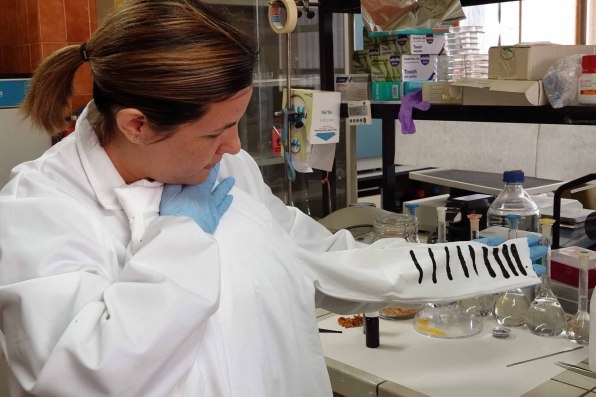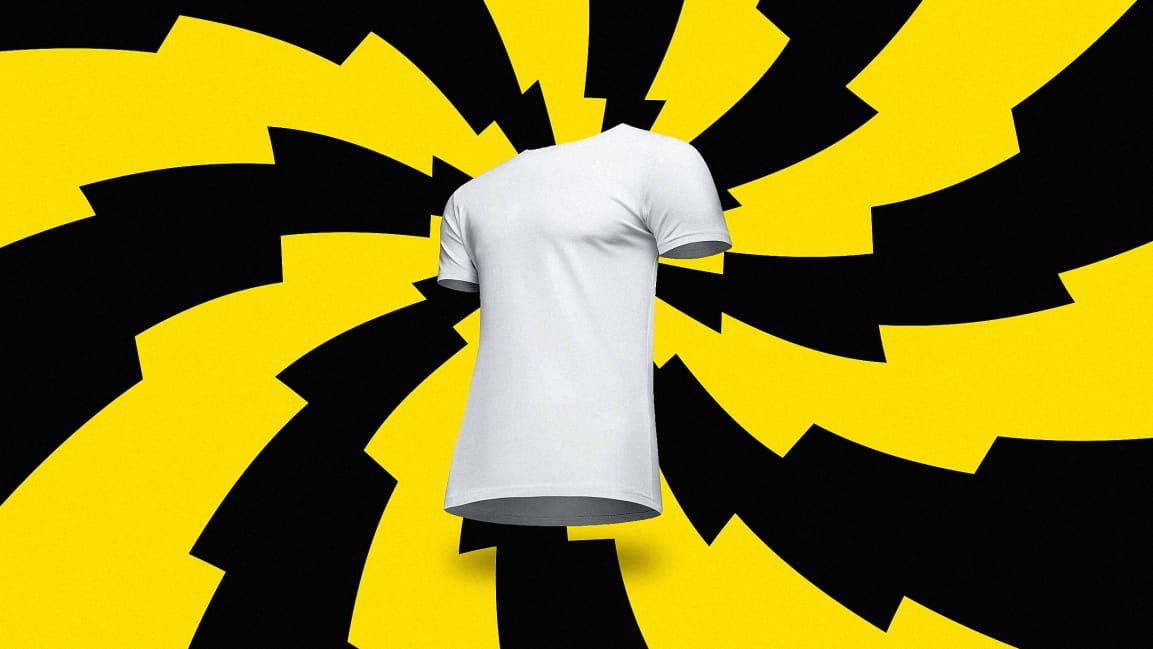This T-shirt uses your body heat to generate electricity
What if your morning run through a park could generate electricity, which could then charge batteries or maybe even power the phone you’re running with? If you’re wearing the right T-shirt, that might be a possibility.
Researchers from the University of Málaga in Spain and the Italian Institute of Technology have designed a T-shirt that generates electricity from the temperature difference between the wearer’s body and their surroundings. That means the body heat coming off you when you run, walk, or play a sport—and the difference between that heat and the colder temperature of the surrounding air—could be transformed into thermal power.
There are a lot of examples of thermal energy in our lives—the sun warming our atmosphere, a stove burner heating a pot of water to boil. But there are also a lot of examples of wasted warmth, or “waste heat,” which is all the unused heat let out into an environment by machines, electrical processes, or even human activity, that could be used as thermal energy.
You can make use of this heat, though, by using something called the thermoelectric effect, which lets you convert temperature differences into electric voltage. If two conductors are connected and one side is heated, electrons start to move over to the cooler side, creating a current that flows through the circuit. Some materials act as conductors that can convert that temperature difference into a power source. What this T-shirt does, researchers say, is capture heat coming off of our bodies, which contrasts with the cool air, making electricity.
Typically, thermoelectric materials recover waste heat from things such as automobiles or industrial processes, and the most common materials that transform that thermal power into an electric current are often scarce and not very environmentally friendly (such as tellurium, which is as rare as gold and platinum). They’re also expensive, rigid, and toxic, explained José Alejandro Heredia, a member of the Department of Molecular Biology and Biochemistry of the University of Málaga and one of the authors of this project, via email—meaning they’re not suitable for a wearable application.

Heredia and the other researchers wanted to develop “flexible, biodegradable, and wearable materials for [thermoelectric] applications that can generate electricity simply with the difference of temperature between the body and the environment,” and so they looked to substitute those usual rigid, expensive materials with low-cost alternatives, such as widely available carbon nanoparticles (graphene and carbon nanofibers, for example), which work as thermoelectric generators.
The issue, though, was in adhering these materials to a cotton T-shirt, and to solve that problem, researchers created a solution from tomato skin that could penetrate the cotton and give those electrical properties to the fabric through biodegradable substances. Why tomato skin? “It was, somehow, a bio-based glue,” says Heredia. And, there’s another environmental bonus to using tomato skin. “Interestingly, this skin is an inexpensive by-product of the tomato processing industry. In this sense, in terms of circular economy, we provide a second life to this residue.”
The end result is a liquid solution, made of that tomato skin and carbon nanoparticles, that can be sprayed into a regular T-shirt, creating an “e-textile.” Heredia says that they tested the resistance of these materials to clothes-washing cycles with promising results. “Nevertheless,” he adds, “we are already working on an improved version that will be completely washable and ironing resistant.”
For this e-textile prototype, researchers used carbon conductive tape to connect the T-shirt to external wires to show that it can produce electricity—the shirt was able to turn on an LED light—but there’s currently not a way for the fabric to store this energy. Heredia hopes to develop that in the future.
“To start, we think this fabric could be employed in niche applications such as to harvest power in extreme situations (space and military missions), but potentially, and with a bit more development, it could also be applied in the fashion industry,” Heredia says. There’s also the possibility to integrate additional features directly into the fabric, such as lights, sensors, and Wi-Fi (in a previous study, they created a Wi-Fi antenna from tomato skin and graphene).
Researchers are working on ways to charge a cell phone without a charger or generate light to make the T-shirt reflective. This tech could also fit into the world of wearables, powering medical sensors, wristwatches, and hearing aids. Thermoelectric textiles could also be used as instant body coolers when incorporated into sportswear, office chairs, or even car seats. Eventually, the researchers joke, this could allow for us to don Iron Man-like suits outfitted with sensors, technological devices, and the ability to fly.
Our clothes are already adapting to the future, and they’re becoming more powerful. Scientists have already incorporated piezoelectricity, which uses movement to generate power, into clothing as well. You can’t buy this electricity-generating T-shirt just yet, but someday, the researchers hope, we could have access to e-textiles outfitted with all kinds of electronic devices, turning us into technological superheroes powered by our own body heat.
(18)



